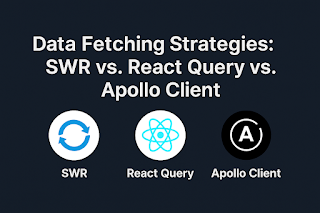Understanding Edge Computing for API Optimization
Source: https://github.com/pottavijay/edge-computing-app
In today’s digital world, speed and user experience are critical. No one wants to wait for a website or application to load, and milliseconds can make a big difference. One powerful solution that’s reshaping how we deliver APIs efficiently is Edge Computing. But what exactly is Edge Computing, and how can it optimize your APIs?
Let's break it down!
What is Edge Computing?
Edge Computing refers to moving computation and data storage closer to the location where it's needed, rather than relying solely on centralized servers. Instead of your request traveling all the way to a remote data center, it's processed at the "edge" of the network—closer to the user.
In API optimization, Edge Computing means serving data and handling API requests near the client’s location, resulting in faster response times, reduced latency, and improved reliability.
Why Edge Computing Matters for APIs
- Reduced Latency
- Better Scalability
- Enhanced Reliability
- Security Benefits
How APIs are Optimized at the Edge
- Caching API Responses: Frequently requested data is stored at edge nodes, reducing database hits and speeding up delivery.
- Edge Authentication: Validating users directly at the edge can offload centralized servers and speed up protected API endpoints.
- Smart Routing: Based on user location, requests are routed to the nearest, healthiest, and fastest node.
- Compute at Edge: Platforms like Cloudflare Workers and AWS Lambda@Edge allow executing custom code at edge locations, such as modifying API responses dynamically.
Tools and Platforms for Edge-Optimized APIs
- Cloudflare Workers: Lightweight JavaScript functions running on Cloudflare’s global network.
- AWS Lambda@Edge: Run serverless functions closer to users without managing servers.
- Vercel Edge Functions: Deploy serverless functions that automatically run at the edge.
- Fastly Compute@Edge: Build applications closer to your users for ultra-low latency.
Real-World Example
Imagine a news app with millions of users worldwide:
Without edge optimization:
- Every API call to fetch headlines hits a central server, causing delays for users far from the server's location.
With edge optimization:
- Headlines are cached and served from edge nodes near users, making the app load almost instantly, anywhere in the world.
Final Thoughts
Edge Computing is not just a buzzword—it's a critical technology for modern API strategies. By embracing edge-based API optimization, you can achieve faster load times, greater reliability, and happier users.
If you're building APIs today, think beyond the data center—think at the edge.
#EdgeComputing #APIOptimization #WebPerformance #CloudComputing #Serverless #DevOps #APIDevelopment #Latency #BackendEngineering #CloudArchitecture




Comments
Post a Comment